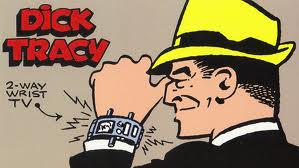Are our minds becoming twitterized? Are our thought processes themselves, of humans collectively, perhaps even across the globe, getting more fragmented?
I remember how contemptuous I was of older people who grumbled about how civilization keeps going downhill. Now I’m one of those older people. And I grumble.
Language, the capacity to communicate both abstract and concrete thoughts to each other is essential to how we are different from all other species we have come in contact with, and our likely to come in contact with in the future. We can imagine, easily enough, another species with whom we could communicate, but this is, as far as we know from actual experience, purely science fiction.
I am also happy to admit that I have had long conversations with my cat, but that doesn’t make me think of getting a orangutan to live in the house to talk to.
Is our language itself becoming twitterized? Are we thinking more in half-sentences, find paragraphs far too much to absorb? This is how we’re talk to each other now? In 140 character chunks?
Worse, is it how we think?
Is our collective ADD (Attention Deficit Disorder) getting worse? Are we making it worse by the media, include the social media, becoming more and more oriented to short blips. By elements that never even attempt to become a whole? Blips of connective tissue in the form of hyperlinks with neither rhyme nor reason to a larger understanding.
Nearly everyone makes cracks about how politics is reduced to “sound bites,” how our kids are addicted to their smart phones, but it doesn’t seem to me that most of us adults are a hell of a lot more willing to exert ourselves to absorb anything that requires a serious effort on our part.
It isn’t just kids who are addicted to Facebook and YouTube. Why is it, for example, that so few “serious” newspapers have survived into the 21st century?
But does this affect how we communicate and how we understand ourselves as human beings?
The sine qua non of our “modern forms of communication,” is that they require very little from their audience. They require neither full nor uninterrupted attention.
(It’s an interesting parallel, most likely not coincidental, with the way the internet works. It works, literally, because a connection is not held. This is the simple genius of it. X sends and doesn’t wait around to get a response from Y. Y responds but just sits there until X sends back. It is asynchronous. This actually pre-dates the internet in CICS, the system that makes ATMs possible. In CICS, this asynchronous communication is accurately labeled pseudo-conversational and the metaphor applies well. One side talks, but other doesn’t listen. Maybe later they’ll listen later, maybe not. If they’ll respond, maybe not. From a computer perspective this is an enormous benefit. The big computers (servers) sending messages back and forth don’t need to keep in contact with sender or receiver and can use resources for other stuff. And sometimes this disjointed mode of communication works fine for humans as well as computers: I open my letters or read my email and answer whether I wish and when I wish. But sometimes it sucks: If I speak and you’re not paying attention, have most of your mind elsewhere, especially if I’m expressing something with emotional content, it sucks.
If we complained that television made us passive from the 1950’s, the computer and smart machines and now twitterization, has developed entire worlds of disjointed, disconnected, dis-communication. It is a bizarre mixture of hyperactivity — jumping wildly from point to point, contact to contact — and extreme passivity: Receiving and sending with minimal internal processing or interpersonal interaction. More like a game of tag than a personal conversation
I’m not a luddite. I don’t see any point in throwing sand into the interlocking cogs of “modern” communication. I use them just like everyone else does and it’s undeniable that the development of communication technology has qualitatively changed human communication, collaboration, and access to information. Though nobody’ll ever beat Dick Tracey’s 2-Way Wrist TV!
The technological change we’re in the midst of, in which computers are involved in nearly all ways we humans communicate is qualitative change, nearly on the order of the evolution of human from chimp. But is up to us as humans to ensure that it is evolution and devolution. To ensure that our minds do not turn to mush by becoming simply receptacles of thoughts, passively receiving them and responding (or not) with maximal facility and minimal absorption, minimal reflection.
But whatever become of us, human communication has changed. It is as impossible for us, now, to envision a world without electronic communication than it was for ancestors to conceive a world with electronic communication.
The word, the seriously thought-through word, is dead! Long live the word!


2 thoughts on “Twitterization”
Comments are closed.